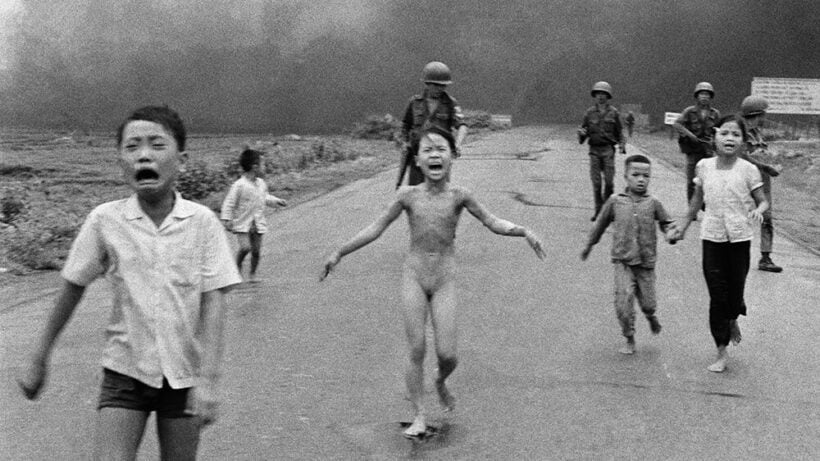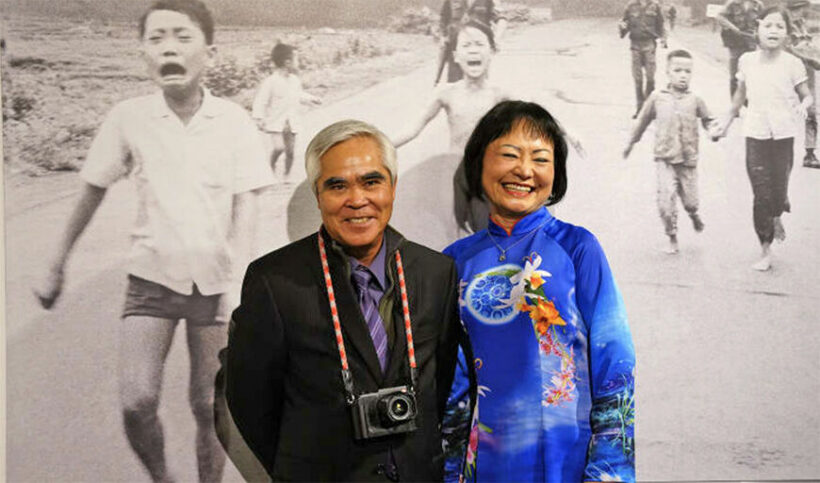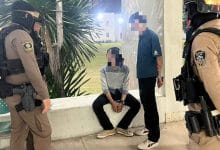50 years today – anniversary of an iconic photo

It’s June 8, 1972 and bombs come raining from the sky in a village called Trang Bang, just 50 kilometres northwest of Ho Chi Minh City (then it was called Saigon).
50 years ago, today, a photo was snapped featuring a 9 year old called Phan Thi Kim Phuc. The photo became not only an indelible image representing the worst of the Vietnam War (called Kháng chiến chống Mỹ – the “Resistance war against the United States” – in Vietnam). Indeed, the photo is one of the most iconic images of the 20th century.
The photo was taken by Associated Press contract photographer Nick Ut, who then helped the children to safety after taking the photo. As the children fled the napalm attack, their faces registered a combination of bewilderment and fear, completely oblivious to the politics behind the bombs being dropped on them
Nick and Phuc remain good friends and met agin in Italy last month.
“I will never forget that moment”, recalled Phuc when meeting the media to commemorate the 50 years since the photo was taken.
Phuc and her family were sheltering with other villagers and soldiers fighting for South Vietnam in a Buddhist temple. They knew it was their aircraft flying above but the pilots clearly thought they were the enemy.
“There was the fire everywhere, and my clothes were burned by the fire. At that moment I didn’t see anybody around me, just fire. I thought… I got burned, I will be ugly, and people will see me different way.”
“I was so terrified.”
Ut was only 21 years old when he was out on the Route 1 highway, camera pointed to the sky, knowing South Vietnamese forces were on their way.
Moments after the photo, Phuc ripped off her during clothing clothes, saturated in napalm.
Ut put his camera down on the road after snapping the famous photo. Phuc was screaming “too hot, too hot” (in Vietnamese). So Ut doused her in water, gathered the other children together, pushed them into the back of his van and drove for 30 minutes to the nearest hospital.
Two of Phuc’s cousins were killed during the bombing.
After begging doctors to attend to Phuc first, Ut headed back to the AP office to develop his photos. As soon as the image started appearing in the dark room he knew he had caught a moment of horror and significance.
Meanwhile, Phuc spent 14 agonising months in hospitals being treated for her injuries.
Many have argued that “Napalm Girl” was THE image that eventually swung the mood of the American people against continuing the futility of the Vietnam War. But, by 1972, most of the US military involvement had already been withdrawn from Vietnam. But the image remained a constant and lingering reminder about the futility and horrendous loss of life inflicted from both sides during the 20 year invasion.
The Vietnam War continued until 1975 which eventually ended with the communists (North Vietnam) taking control of the country’s US-backed south.
In White House taped recordings of President Richard Nixon released decades later, the President had speculated that the famous picture had been staged as “a fix”.
Ut says to this day that the remark had made him “so upset”. Ut was awarded the Pulitzer Prize for news photography in 1973 and the photo was also named World Press Photo of the Year and appeared on the front page of more than 20 leading US daily newspapers, and hundreds of others around the world.
In the wake of the attack and her recovery Phuc wanted to become a doctor but the Vietnamese communist government had other ideas, acknowledging the power of THAT photo and using her in propaganda campaigns.
Phuc recalls the constant attention of overseas journalists but struggled with all the attention and reliving the moment.
“I couldn’t go to medical school… I kind of I hated it.”
Phuc was eventually granted political asylum in Canada in 1992 where, with time and maturity on her side, she wrote a book about her experiences and established the Kim Foundation International, a charity that would provides aid to children of war.
She was later named a UN goodwill ambassador in 1997 and was able to give keynote speeches around the world about her life story. Rather than blaming or hating, Phuc’s message was one of forgiveness and peace.
In April this year, both Ut and Phuc presented a copy of the photograph to Pope Francis in St Peter’s Square.
“Now I can look back and embrace it (the photo). I’m so thankful that Ut could record that moment of history and record the horror of war, which can change the whole world.”
“I can keep my dream alive to help others.”
Ut is now retired but strongly believes in the power of “conflict photography”. Referring to the ongoing war in Ukraine Ut noted that “the discipline is just important now as it was in Vietnam”.
“The cumulative effect can be just as impactful as the single, iconic newspaper images of generations past”.

PHOTO: Nick Ut and Kim Phuc in April 2022. Getty Images
Latest Thailand News
Follow The Thaiger on Google News:


























